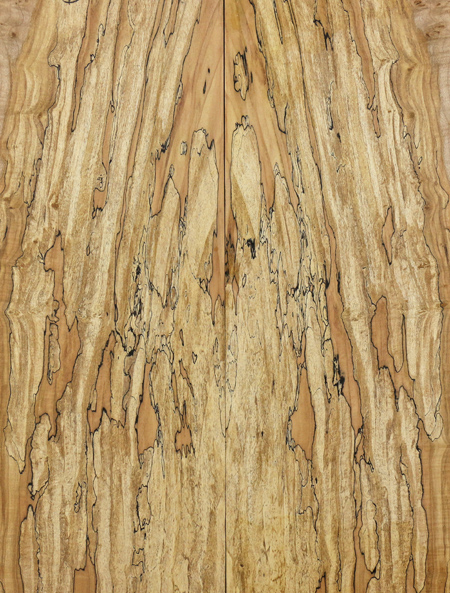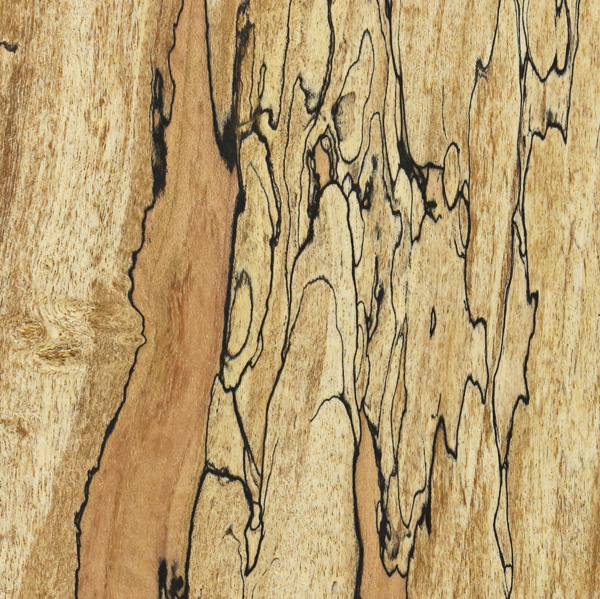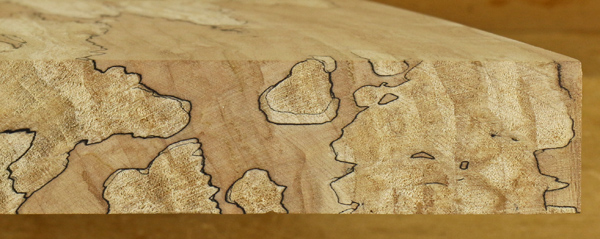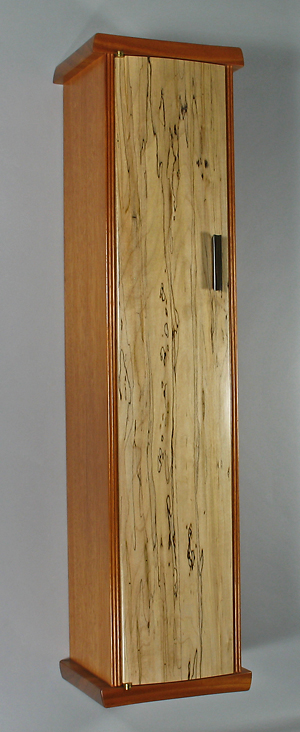Isn’t spalted wood rotten wood? Yes, partly, but spalted wood is a beautiful and interesting product of nature that can be the main attraction of splendid woodworking.

What is spalted wood?
Spalting is created by fungal invasion of wood — it is literally rotting. This causes some areas of the wood to bleach to a champagne color while other areas retain the original color of the wood. Certain fungi can even produce stained areas of blue, pink and other colors.
The most fascinating creations of the fungi are dark lines, usually black, that look like free-form art drawn with a calligraphy pen or figures in fine marble. These zone lines are actually pigment demarcations constructed by the fungal colonies to protect their turf from potential competitor fungi.
Fungal spores deposit on wood and grow in humid, dark and moderately warm conditions. The wood, a log or sawn board, must still be “wet” with moisture content of at least 20 percent. The rotting process is halted when the required conditions are removed. For practical purposes, this means drying the wood, most rapidly by kiln drying.
Part of the art of intentional spalting and the luck of finding spalted logs, is halting the process when enough interesting patterns have been created but before the wood becomes too rotten, soft and unusable.
In the close-up photo below, note the partly bleached wood compared to the darker band of intact wood, and the amazing black zone lines.

The end grain view, below, shows that spalting is throughout the thickness of the wood, not just a surface change.

Finding good rotten wood
Any species of wood will eventually rot under the right conditions, but some do so more readily and look nicer along the way. Sugar maple (hard maple) has the ideal properties to produce fine spalted wood. The light-colored wood that composes most maple boards is sapwood. This contains the carbohydrates that are food for the fungi and it attractively shows the dark zone lines. Since sugar maple is a quite hard wood to begin with, it is less prone to getting too soft by spalting, giving it an advantage over its cousins, the soft maples. Mild spalting in any maple that has a curly figure can produce some real beauties.
Other species, such as birch, beech, poplar, and aspen can produce good spalted wood, but spalted maple is the most common that you will find and usually the best.
Working with spalted wood
Aesthetically, spalted wood works best in furniture and cabinetry as a feature or accent rather than as a primary wood. Examples are panels in doors, box lids and small drawer fronts. Because it is so impressive, a plain primary wood sets it off well — like a plain shirt with a flashy tie.
I made the cabinet below with spalted maple door and mahogany case.

Though it is partially rotten wood, people seem almost unanimously appreciative of its unique appearance in pieces. Turners create particularly wonderful pieces with spalted wood.
Some bleached areas in a spalted board may have progressed too far prior to drying and become punky. Avoid boards with excessive amounts of spongy-soft or cracked wood. Small soft areas can be hardened with cyanoacrylate glue or epoxy. For larger, moderately soft areas, a water-based product called PC-Petrifier is easy to use.
Below, moderately soft areas in this board have been easily indented with fingernail pressure.

Spalted wood is generally not a sound structural wood. It is best avoided for joinery or at least used with caution in, for example, a dovetail joint for a drawer front. There, a better option might be to use the spalted stock as a false front and make the joinery out of sound, regular wood. Also keep in mind that some of it is more prone to denting.
A very sharp plane will usually be the best choice for finish surfacing spalted wood. Harden very soft areas first. Sanding must be done carefully with a broad, fairly firm backing to avoid depressions in even mildly softer areas.
Finishing
My favorite finish for spalted maple is water-based acrylic, which gives almost no color change to spalted wood’s natural beauty. An alternative is blonde shellac, used as a seal coat or full finish, which can look good on boards with more color such as some spalted big leaf maple.
Oil and oil varnish finishes get soaked up like a sponge by spalted wood and, in my opinion, muddy the beautiful natural look. As always when choosing a finish, experiment on scrap or unseen areas.
Bought, found or made, spalted wood can be an exciting addition to your woodworking repertoire.

Share tips, start a discussion or ask one of our experts or other students a question.
No Responses to “More Than Rotten: Working With Spalted Wood”